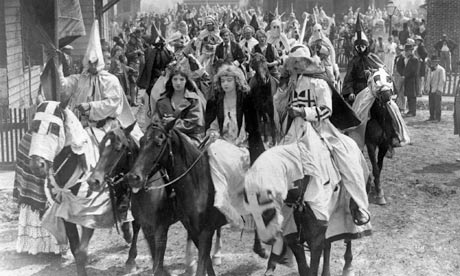
The early film critics, wrote Alistair Cooke in 1937, were presented with a new art form, unencumbered by tradition, and free "to define the movies with no more misgivings than Aristotle defined tragedy". Or at least they would have been, but the press lost interest once the novelty wore off, and so "through a trick of snobbery the simple Aristotelian lost his chance". This lapse did not pass without comment. While "every theatre play is accorded the honour of a press notice", complained the trade paper Kinematograph Weekly as late as 1918, the "perfunctory sort of acknowledgement" given the likes of The Birth of a Nation and Intolerance was "obviously written by people who bring to the kinema the prejudiced mind of dear old Granny from the country on her first visit to the play".
There was a handful of exceptions, and the not entirely reliable consensus had it that WG Faulkner, of the London Evening News, was author of the "first regular criticisms of films in any British newspaper". Faulkner, the paper's local government correspondent, had found himself covering Charles Urban's Kinemacolor films, shown at Fitzrovia's Scala theatre during 1911, before beginning a weekly column on 17 January 1912. "The picture theatre has taken a firm place in the social enjoyment of the people," he announced. "It is no longer a matter of wonder; it has become an everyday part of the national life."
Britain was then in the midst of a cinema-building boom. Films had hitherto been shown in "a dilapidated shop, in which there were no seats, where the projector was placed in the middle of the standing audience", as Faulkner put it, or to announce chucking-out time at the music hall. The electric palaces, as the new buildings were sometimes known, made movies halfway respectable.
Faulkner's first few years in the job saw the dawn of the long "feature" film, the rise of the star system, and – though he may not have discerned it himself – the standardisation of storytelling techniques that film-makers still use today. The major genres of American cinema – Hollywood, barely on the map, had yet to donate its name – were just coming into being. In March 1912 Faulkner described the Tom Mix western The 'Diamond S' Ranch, which "shows the cowboys, as they are called, taming bucking broncos, bulldogging wild steers and performing other wonderful feats of skill and iron nerve", as if he'd never seen one. "It is in reality an educational film."
Yet it was not long before he posed the question, "Spectacular pictures: are there too many of them?" He suffered preview-screening ennui within years of the preview's invention. "Most of the people who go to them have seen pictures for business purposes so often that it takes a lot to arouse them." In April 1914, he asked "whether Roman history has not been a little overdone during the past year or so". After the trade rejected an Italian biopic of the poet Tasso, he defended "pictures that are 'too artistic'". Faulkner even appears to have experienced awards-season fatigue, one December long before awards began: "The number of really first-class films which are being released this month and early in the new year is so great that it is impossible to sample all the best."
Like every film critic since, he discussed the problem of adaptation: Sherlock Holmes presented "a difficult task because the somewhat slow reasoning, and the careful deductions made by the great detective, are very hard to picture for motion photography". And he was an exponent of the evergreen "the British are coming" piece. "One begins to wonder whether Great Britain will not soon become one of the greatest, if not the greatest, producer of moving images in the world." On seeing – and hearing – Thomas Edison's Kinetophone, a sound-film system exhibited to the West End public in January 1914, he wrote of "a new chapter opened in the history of moving pictures, a chapter the end of which no man can foresee or even conceive". Alas, it was another decade and a half before the idea caught on.

